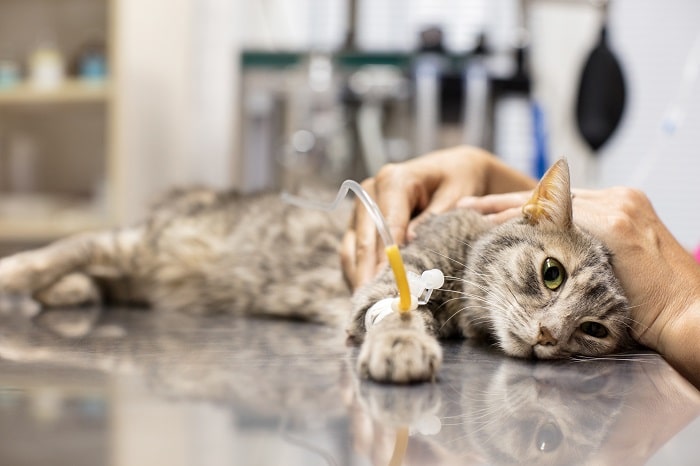Why dogs and cats can still get sick even if they look healthy? Discover the hidden reasons, common silent illnesses, early warning signs, and essential preventive care tips to protect your pet’s long-term health.
Introduction

Many pet owners assume that if their dogs or cats are eating well, staying active, and looking healthy, then everything must be fine. However, appearances can be deceiving. Just because a pet looks energetic and playful doesn’t always mean they are free of disease. In fact, many illnesses in dogs and cats progress silently, showing little to no obvious symptoms in the early stages.
In this article, Asiapata explores why dogs and cats can still get sick even if they look healthy, the types of hidden diseases to watch for, and how you can protect your beloved companions with proper care and regular check-ups.
1. Understanding “Healthy” in Pets
For most owners, a “healthy” pet is one that:
-
Has shiny fur
-
Eats and drinks normally
-
Plays and interacts energetically
-
Maintains regular bathroom habits
While these are good indicators, true health goes beyond outward appearance. Internal systems such as the heart, kidneys, liver, immune system, and endocrine glands play a crucial role in overall well-being. A pet may look perfectly fine on the outside but still be battling an underlying condition.
2. Why Do Pets Look Healthy but Still Get Sick?
2.1. Hidden or Latent Diseases
Some illnesses have long incubation periods or progress so gradually that pets show no symptoms at first. Examples include:
-
Chronic kidney disease
-
Heart disease
-
Early-stage cancer
-
Endocrine disorders such as hyperthyroidism or diabetes
2.2. Immune System Compensation
Dogs and cats often appear well because their immune system is compensating for an illness. The body may temporarily suppress symptoms, giving a false impression of good health until the condition worsens.
2.3. Natural Instinct to Hide Weakness
Animals have evolved to hide signs of weakness to protect themselves from predators. Even in a safe domestic environment, pets may instinctively mask pain or discomfort.
2.4. Infectious Diseases Without Early Symptoms
Certain viral and parasitic infections can live in a pet’s body without immediately showing signs, such as:
-
Heartworm disease
-
Feline coronavirus (FCoV)
-
Canine distemper virus (early stages)
2.5. Environmental and Lifestyle Factors
-
Poor diet or unbalanced nutrition
-
Exposure to toxins or pollutants
-
Lack of exercise or prolonged stress
These factors can damage a pet’s internal health long before physical symptoms appear.
3. Common Hidden Illnesses in Dogs and Cats

3.1. Parasitic Diseases
-
Heartworm: can remain unnoticed until it causes life-threatening heart or lung problems.
-
Intestinal worms (roundworm, hookworm, tapeworm): rob pets of nutrients but may not show obvious signs.
-
External parasites (fleas, ticks, ear mites): may go undetected but still cause anemia, infections, or skin disease.
3.2. Infectious Diseases
-
Canine distemper and feline panleukopenia may incubate silently for days.
-
Feline coronavirus (FCoV) can live in cats without visible symptoms until it progresses to FIP.
3.3. Chronic Conditions
-
Kidney failure often shows no symptoms until most kidney function is lost.
-
Diabetes may initially only cause subtle changes like increased thirst.
-
Thyroid disorders can disrupt metabolism without clear signs in the early stages.
3.4. Dental Diseases
Periodontal disease, gingivitis, and tooth decay can silently harm pets, leading to systemic issues like heart and liver problems.
4. Early Warning Signs Owners Shouldn’t Ignore
Even if pets look healthy, subtle changes may reveal hidden illness:
-
Reduced appetite or selective eating
-
Drinking or urinating more than usual
-
Unexplained weight loss or gain
-
Increased fatigue or reluctance to exercise
-
Rapid breathing or difficulty recovering after light activity
-
Excessive shedding or dull coat
-
Behavioral shifts such as irritability or withdrawal
5. Risks of Ignoring Silent Illnesses

Relying only on outward appearance can have serious consequences:
-
Delayed diagnosis means treatment becomes harder and less effective.
-
Shortened lifespan due to progressive disease.
-
Higher medical costs compared to preventive care.
-
Infection risk to other pets in the household.
6. How to Detect and Prevent Hidden Diseases
6.1. Schedule Regular Check-Ups
-
Every 6 months for adult pets
-
Every 3 months for senior pets or those with a medical history
Routine bloodwork, X-rays, and urinalysis can detect problems before symptoms appear.
6.2. Keep Vaccinations Up to Date
Core vaccines protect against life-threatening illnesses like rabies, distemper, and parvovirus in dogs, or feline calicivirus and panleukopenia in cats.
6.3. Parasite Control
Deworm regularly and apply flea/tick preventives as recommended by a veterinarian.
6.4. Balanced Nutrition
Feed high-quality, species-appropriate diets tailored to age, breed, and health condition.
6.5. Observe Daily Behavior
Pet parents should watch for subtle changes in eating, sleeping, playing, or social behavior as these may be early warning signs.
7. Expert Insights
Veterinarians often remind owners that:
“Looking healthy is not the same as being healthy.”
Proactive care, preventive medicine, and careful observation are the best ways to ensure pets live long, happy, and disease-free lives.
Conclusion
So, why can dogs and cats still get sick even if they look healthy? Because visible health does not always reflect internal health. Many diseases progress silently, while pets instinctively mask their pain or discomfort. This is why preventive care—including vaccinations, parasite control, balanced nutrition, and regular veterinary visits—is essential.
By understanding the hidden risks and taking proactive steps, you can protect your furry companions and give them the best possible chance at a long and healthy life.
Read more:
How to Help Your Pet Feel Less Scared During Bath Time
What Tests Do Pets Need Before Going Abroad?

